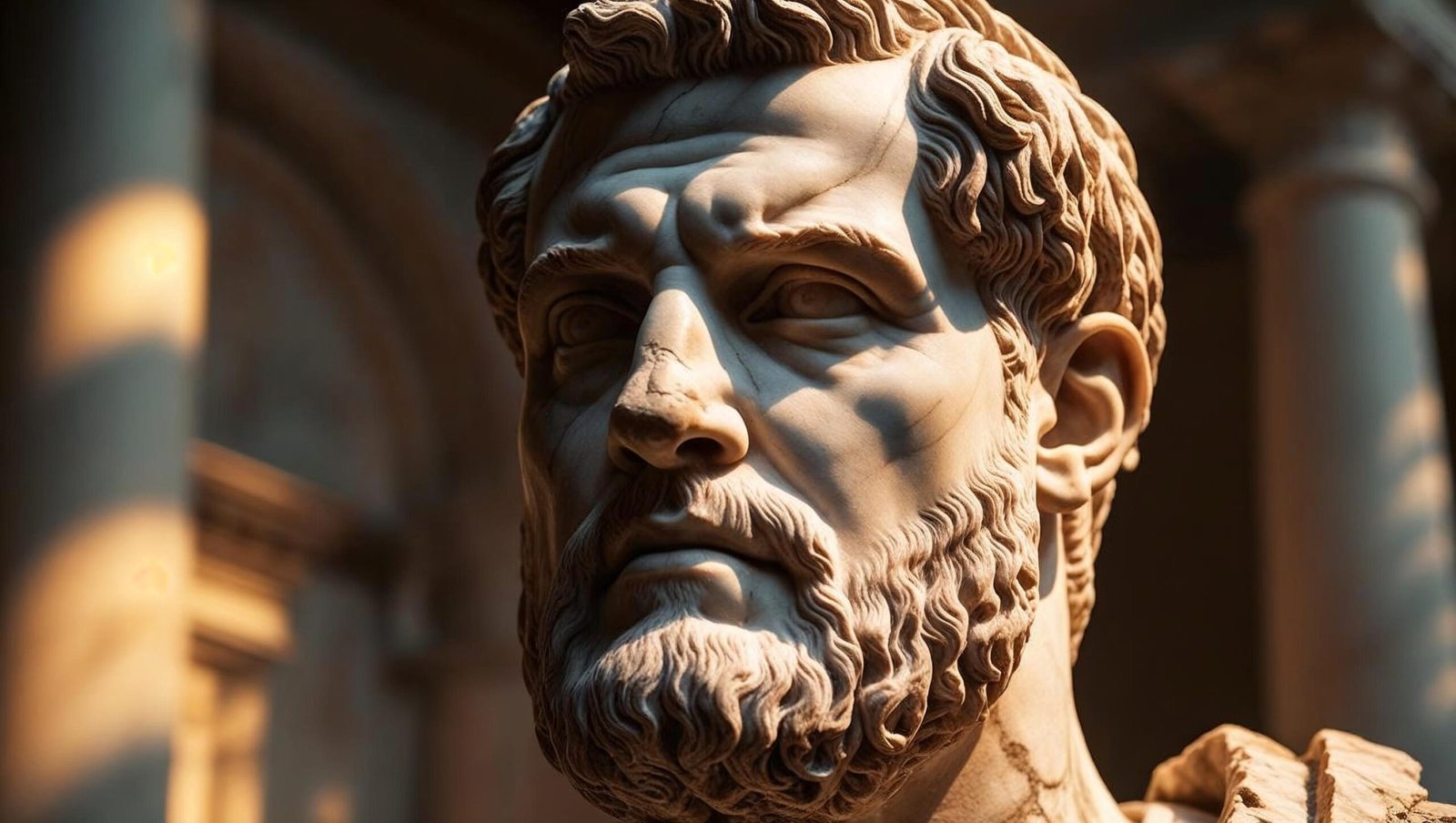How to Think Like a Roman Emperor by Donald Robertson: 9 Profound Lessons That Will Change Your Life
In a world where chaos reigns and emotional turmoil often eclipses reason, How to Think Like a Roman Emperor by Donald Robertson emerges as a potent antidote. This compelling synthesis of modern psychology and ancient Stoicism delivers more than philosophical abstraction—it provides a practical roadmap to cultivate wisdom, emotional resilience, and internal peace. With a rare blend of historical biography and therapeutic insight, Robertson crafts a work that is both intellectually rigorous and deeply human.
As a modern-day psychotherapist and scholar of Stoicism, Donald Robertson bridges two distinct yet mutually enriching worlds. Through the life and meditations of Marcus Aurelius, he unravels the timeless Stoic principles and repackages them for our contemporary struggles—from anxiety and anger to grief and fear.
In this review of How to Think Like a Roman Emperor by Donald Robertson, we explore nine transformative lessons that not only reflect the emperor’s Stoic journey but also offer pragmatic tools to revolutionize our own thinking.

1. The Psychological Foundation of Stoicism
The bedrock of How to Think Like a Roman Emperor by Donald Robertson is the idea that our judgments shape our emotional responses. Echoing Epictetus’ maxim, “It’s not events that upset us, but our judgments about them,” Robertson shows how Marcus Aurelius internalized this core tenet.
Drawing parallels with Cognitive Behavioural Therapy (CBT), Robertson demonstrates how Stoicism anticipated many of its methods. For Marcus, cognitive mastery wasn’t a luxury—it was a necessity. The emperor practiced viewing problems from a higher vantage point, thereby disarming negative emotions.
This integration of ancient Stoicism with contemporary psychotherapy is one of the book’s greatest strengths. It doesn’t merely recount philosophy—it applies it.
2. The Stoic Emperor’s Path to Self-Mastery
In How to Think Like a Roman Emperor by Donald Robertson, Marcus Aurelius is not portrayed as a distant marble statue of virtue. Instead, we meet a man who struggled—yet persistently chose discipline over indulgence, courage over comfort.
His daily reflections in Meditations were not written for public acclaim but for private self-examination. Robertson highlights how these notes reveal a man constantly refining his character, confronting fears, and reminding himself to act with justice, moderation, and humility.
The lesson here is profound: Stoicism is not about perfection but persistent self-correction.
3. Confronting Fear and Anxiety
In a society plagued by anxiety, Robertson’s insights are refreshingly therapeutic. One chapter of How to Think Like a Roman Emperor by Donald Robertson offers a Stoic strategy to manage fear: voluntary discomfort.
Marcus often imagined losing his wealth, his health, even his loved ones—not out of pessimism, but to immunize himself against future grief. This mental rehearsal, known as premeditatio malorum, cultivates psychological fortitude.
Robertson urges readers to face their fears instead of fleeing them. By gradually exposing ourselves to discomfort and reflecting rationally, we transform fear into acceptance—and even power.
4. Anger Management: A Stoic Response
Anger, that most combustible of emotions, is tackled head-on in How to Think Like a Roman Emperor by Donald Robertson. Marcus viewed anger as temporary madness. He trained himself to pause, to ask: “What exactly is so terrible about this?”
Robertson translates this into actionable advice: question your expectations. Most anger arises from unmet assumptions. By lowering unrealistic expectations and embracing reality as it is—not as we wish it to be—we reduce the fuel for anger.
Stoicism, as illustrated in the book, teaches us to respond, not react.
5. The Impermanence of All Things
One of the most emotionally moving sections of How to Think Like a Roman Emperor by Donald Robertson is its meditation on death. Rather than morbid fixation, Marcus Aurelius saw death as a clarifier. By remembering our mortality, we are inspired to live more consciously, more gratefully.
Robertson explores this with poignant clarity. He explains how the Stoics used “memento mori” not as fear-mongering, but as a motivational reminder. This awareness empowers us to prioritize what truly matters.
Life becomes more vivid when seen through the lens of impermanence.

6. The Power of Rational Choice
A key pillar in How to Think Like a Roman Emperor by Donald Robertson is the Stoic belief in rational agency. While we cannot control external events, we can always control how we respond.
Robertson guides readers to develop a vigilant mind—one that pauses before speaking, chooses virtue over vice, and practices reflection before reaction. This mirrors modern mindfulness but with a Stoic core.
Marcus was an emperor, yet he did not let power corrupt his mind. Instead, he reaffirmed his allegiance to reason and moral choice—a lesson sorely needed today.
7. Nature as the Model
How to Think Like a Roman Emperor by Donald Robertson continually emphasizes that Marcus saw himself as part of a larger whole—a cosmos ordered by reason. Living in harmony with nature meant accepting one’s role and fulfilling it with integrity.
This cosmic perspective reduces egotism and situates personal pain within a broader context. Robertson skillfully conveys this worldview, urging readers to see beyond themselves and embrace interconnectedness.
Understanding this, we begin to ask not “What do I want?” but “What does this moment require of me?”
8. Developing Empathy and Compassion
Despite his imperial authority, Marcus Aurelius was known for his gentleness. In How to Think Like a Roman Emperor by Donald Robertson, compassion is not weakness—it is wisdom in action.
Robertson argues that Stoicism, contrary to modern misinterpretations, is not cold detachment. Rather, it calls for rational benevolence. Marcus constantly reminded himself that people err not out of malice, but ignorance.
This mindset fosters empathy, patience, and forgiveness. The Stoic sage sees common humanity beneath the surface of conflict.
9. Philosophy as a Daily Practice
Perhaps the most essential takeaway from How to Think Like a Roman Emperor by Donald Robertson is that philosophy must be lived. It is not a lecture but a discipline.
Marcus wrote daily. He visualized challenges before facing them. He meditated on virtue. He saw each day as an opportunity to practice wisdom.
Robertson invites us to do the same. Keep a journal. Reflect on our values. Accept hardship as a teacher. Cultivate the Stoic virtues—wisdom, courage, justice, temperance—not sporadically, but habitually.
The Stoic Blueprint for a Modern Life
Reading How to Think Like a Roman Emperor is not merely an intellectual pursuit—it is a moral awakening. In a culture that glorifies instant gratification and fleeting fame, Donald Robertson’s book functions as a moral compass grounded in timeless Stoic wisdom. He channels Marcus Aurelius not as an unreachable paragon but as a fellow human striving for mastery over his passions. In doing so, the book becomes deeply relatable.
We live in an era marked by noise, distraction, and emotional volatility. Amidst this chaos, How to Think Like a Roman Emperor gently beckons us to pause, reflect, and return to the fundamentals of self-control, virtue, and purpose.

Reframing Adversity Through the Stoic Lens
A remarkable element that distinguishes How to Think Like a Roman Emperor is its consistent reminder that adversity is not our enemy—it is our ally in growth. Marcus Aurelius reigned during wars, plagues, political betrayal, and personal grief. Yet, through it all, he remained committed to reason, compassion, and dignity.
Robertson highlights how the Stoics treated every obstacle as a training ground for the soul. Like Marcus, we can choose to interpret challenges not as punishments but as opportunities to exercise strength and character. This Stoic reframe, championed in How to Think Like a Roman Emperor, is not only empowering but liberating.
Rather than hoping for an easy life, we prepare for a meaningful one.
The Importance of Ethical Role Models
Throughout How to Think Like a Roman Emperor, the significance of role models is repeatedly emphasized. Marcus learned from the virtuous conduct of his teachers, mentors, and predecessors. He did not see ethics as an abstract ideal but as a lived experience demonstrated by those he admired.
Donald Robertson reminds us that we, too, can consciously select role models—living or historical—to emulate. Whether it is Marcus Aurelius, a present-day leader, or a wise elder, these models act as guiding lights. They provide behavioral benchmarks in moments of uncertainty.
By reading How to Think Like a Roman Emperor, readers begin to internalize Marcus himself as a personal mentor—a beacon of integrity, discipline, and resilience.
Harnessing the Power of Self-Reflection
Another cornerstone of the Stoic path, beautifully articulated in How to Think Like a Roman Emperor, is the practice of daily self-reflection. Marcus Aurelius wrote in his Meditations not to preach but to clarify his own intentions and actions. The diary was his sanctuary—a place to realign with his values and recalibrate his course.
Robertson urges modern readers to adopt a similar habit. In the age of information overload, a quiet moment of journaling can restore perspective. It becomes an exercise in honesty, humility, and continuous refinement.
How to Think Like a Roman Emperor shows us that the unexamined life is not only unworthy—it is unsustainable.
Why Stoicism Still Matters
Many may wonder why Stoicism, a philosophy born in ancient Greece and refined in imperial Rome, remains relevant today. The answer lies in its universality. How to Think Like a Roman Emperor proves that the human condition has not changed—we still wrestle with fear, anger, pride, loss, and uncertainty.
Stoicism does not promise invincibility, but it offers clarity. It teaches that while external events are beyond our control, our response to them is not. This realization is nothing short of revolutionary. It shifts power from the world back into our hands.
Robertson’s work becomes not only a Stoic primer but a psychological survival guide for the 21st century.
The Dangers of Living Reactively
One of the most penetrating insights in How to Think Like a Roman Emperor is its exposure of reactive living. Modern society often conditions us to chase approval, respond impulsively, and be driven by ego. This path leads to fragmentation and suffering.
Marcus Aurelius, as Robertson reveals, was acutely aware of this trap. He trained himself to delay reaction, to question impulse, and to align every decision with reason and virtue. This ability to create a reflective pause between stimulus and response is what differentiates a philosopher-king from a tyrant.
How to Think Like a Roman Emperor teaches us that mastery of life begins with mastery of the self.

The Interplay Between Philosophy and Psychology
One of the book’s finest intellectual contributions is its seamless weaving of ancient philosophy with modern psychology. Donald Robertson, as both a cognitive-behavioral therapist and Stoic scholar, offers unparalleled insight into how Stoicism anticipated psychological models developed millennia later.
Concepts like cognitive distortions, exposure therapy, and emotional regulation are deeply embedded in Stoic practice. How to Think Like a Roman Emperor doesn’t just draw parallels—it makes them useful. Every philosophical idea is translated into a tangible strategy.
This synthesis makes the book appealing not just to thinkers and historians, but to therapists, educators, and seekers alike.
Meditation in Action: The Daily Routine of a Philosopher-Emperor
A compelling section in How to Think Like a Roman Emperor is the reconstruction of Marcus Aurelius’ daily practices. Robertson details how Marcus used visualization techniques each morning, rehearsing how he would respond to difficult people and situations.
This mental rehearsal—a Stoic equivalent of modern mindfulness—allowed him to greet life with composure. He also practiced gratitude, cosmic contemplation, and journaling, forming a holistic framework for ethical living.
The message is clear: greatness is not accidental. It is cultivated through intention, ritual, and reflection. How to Think Like a Roman Emperor invites us to adopt such practices, not in grand gestures, but through consistent effort.
The Power of Letting Go
Another invaluable teaching from How to Think Like a Roman Emperor is the art of letting go. The Stoics believed that clinging—to pleasure, status, possessions, even loved ones—was the root of much suffering. Freedom lies not in detachment but in wise non-attachment.
Marcus Aurelius frequently reminded himself of the transient nature of all things. By contemplating impermanence, he liberated himself from fear and obsession. Robertson conveys this lesson with both emotional depth and clinical clarity.
This wisdom is especially vital today. In a society addicted to more—more likes, more things, more recognition—How to Think Like a Roman Emperor dares to ask: what if we needed less?
Transforming Philosophy into Praxis
Perhaps the most enduring contribution of How to Think Like a Roman Emperor is its insistence on action. Philosophical contemplation is not enough. Stoicism demands implementation.
Whether through journaling, visualization, meditation, or self-questioning, Robertson provides readers with exercises to make Stoicism real. He demystifies virtue and turns it into a daily endeavor.
By the end of the book, the reader is not merely informed—they are empowered.
How to Think Like a Roman Emperor succeeds where many philosophical texts falter: it transforms wisdom into a lived experience.
Final Thoughts: Becoming Your Own Emperor
To read How to Think Like a Roman Emperor is to engage in philosophical alchemy. It turns pain into power, confusion into clarity, and weakness into wisdom. It is a manual not for ruling others but for ruling the self.
Donald Robertson’s work has ignited a Stoic revival for a reason. He speaks to our highest potential while acknowledging our most human flaws. He reminds us, as Marcus did, that the true emperor is the one who has mastered himself.
If you are searching for a book that does more than inform—one that awakens, challenges, and elevates—How to Think Like a Roman Emperor is it.

FAQs: How to Think Like a Roman Emperor by Donald Robertson
Q1: Is this book suitable for someone new to Stoicism?
A: Absolutely. How to Think Like a Roman Emperor by Donald Robertson is accessible, even for readers unfamiliar with philosophy. It explains complex ideas with clarity and relevance.
Q2: How does the book relate to modern therapy?
A: Donald Robertson is a trained psychotherapist. He shows how Stoicism laid the groundwork for Cognitive Behavioural Therapy (CBT), offering modern readers therapeutic tools for resilience.
Q3: Is the book just about Marcus Aurelius?
A: While Marcus Aurelius is the central figure, the book explores Stoicism more broadly—its core principles, practices, and relevance today.
Q4: Can this book help with anxiety and anger?
A: Yes. The Stoic techniques outlined in How to Think Like a Roman Emperor by Donald Robertson are profoundly helpful in managing emotions like anxiety, anger, and fear.
Q5: Is this a historical biography or a self-help book?
A: It is a hybrid. Robertson combines historical biography with psychological insight, making it both educational and practical.
Conclusion: An Essential Stoic Guide for Modern Minds
How to Think Like a Roman Emperor by Donald Robertson is more than a book—it is a mirror. A mirror that reveals the turbulence within us and offers the means to calm it. A guide that invites us to cultivate inner fortitude, not through escapism, but through philosophical confrontation.
Donald Robertson has masterfully translated the Stoic spirit of Marcus Aurelius into a handbook for modern living. The book reminds us that the most powerful empire is not external but internal—the empire of our mind.
For those seeking a compass in chaotic times, How to Think Like a Roman Emperor by Donald Robertson is not just recommended—it is essential.
For more in-depth reflections on transformative literature, visit shubhanshuinsights.com and explore how books can become beacons of change.